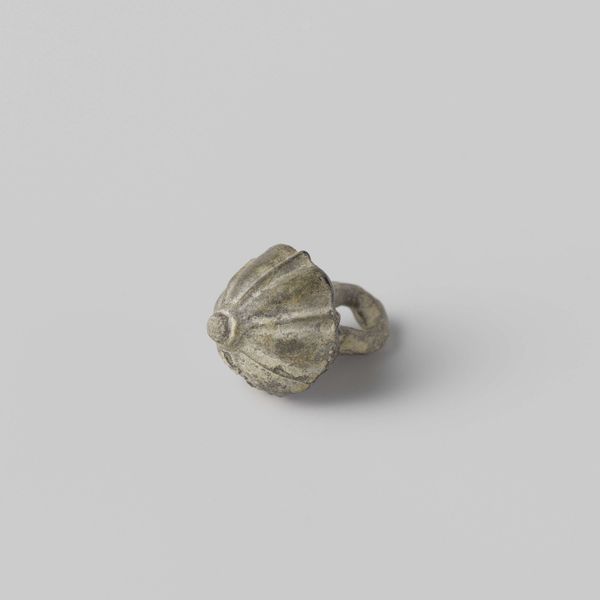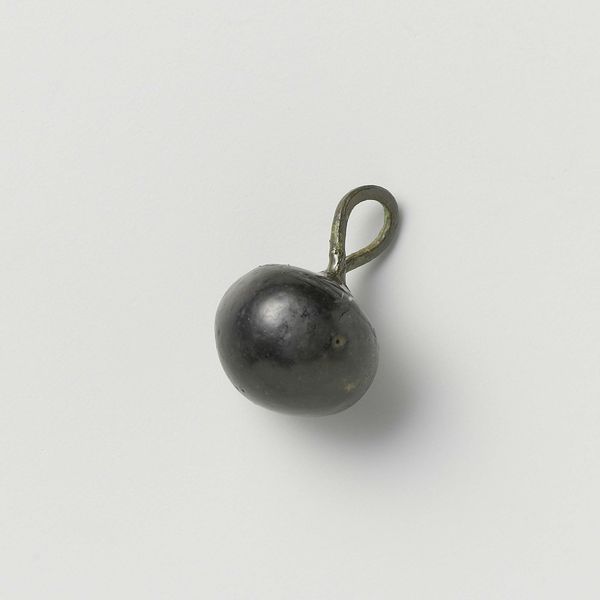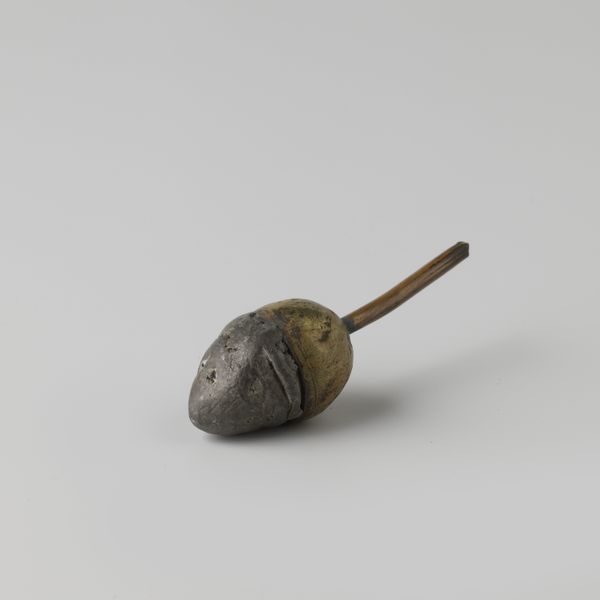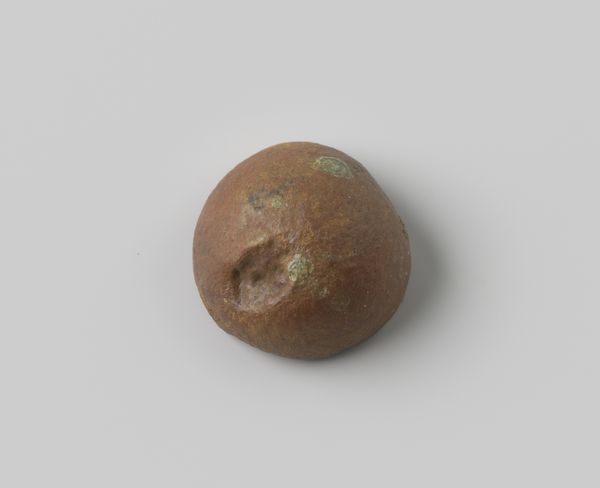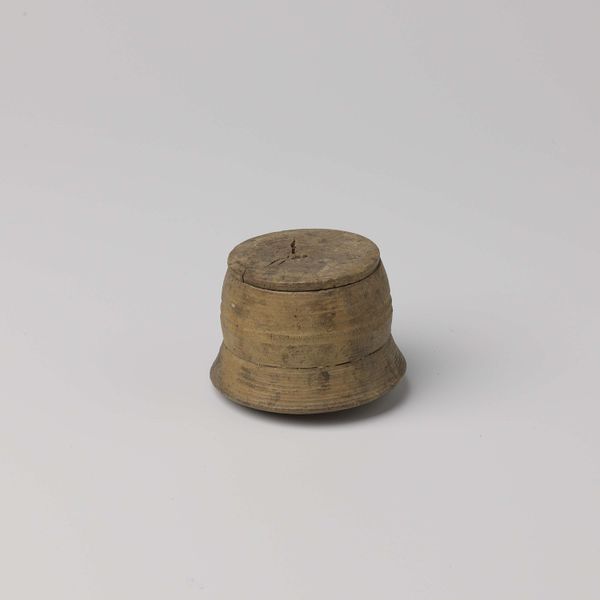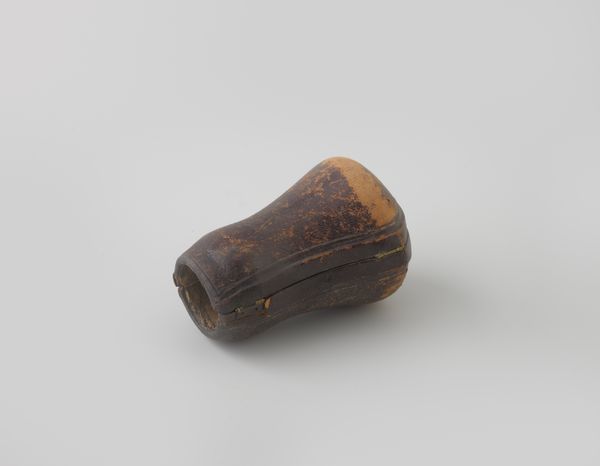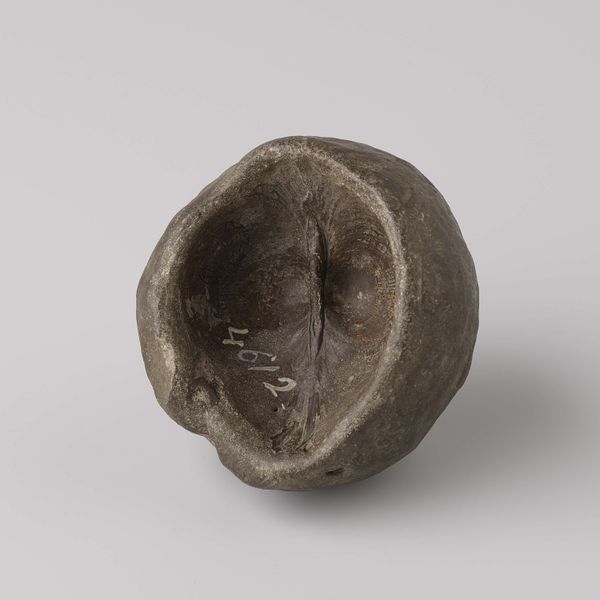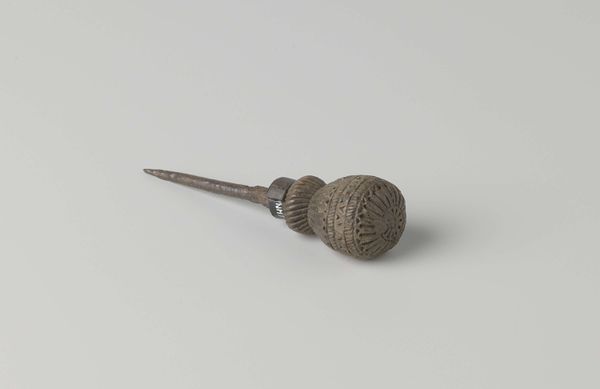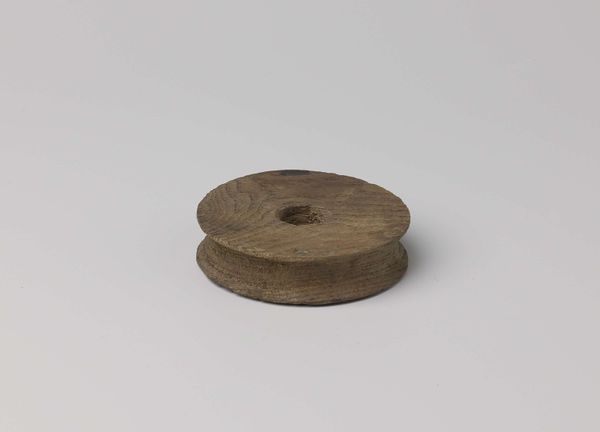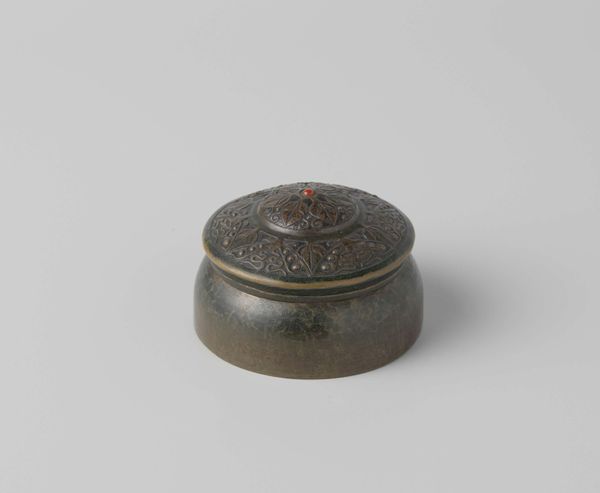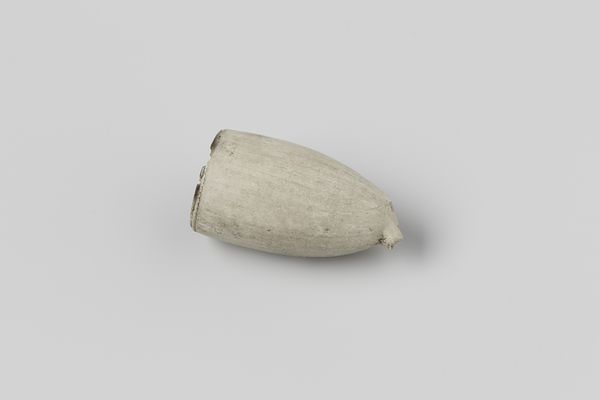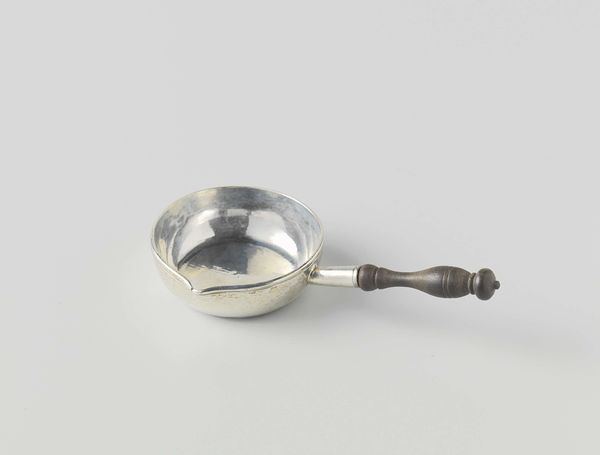
carving, metal, sculpture
#
medieval
#
carving
#
metal
#
form
#
geometric
#
sculpture
#
history-painting
Dimensions: depth 1.7 cm, diameter 1.3 cm
Copyright: Rijks Museum: Open Domain
Curator: What strikes me most about this object is its enigmatic nature. It's called "Boorijzer," created around 1596. Though the artist is unknown, we find it here at the Rijksmuseum. It's primarily made of metal, carefully carved into a geometric form. Editor: Its simplicity is powerful. The dark sphere seems to float; almost like a meditative object. The symmetry has an almost hypnotic pull; quite interesting, really, especially given its presumed function as a utilitarian object. Curator: Yes, that’s an excellent point. We see these spherical forms throughout history—often referencing the cosmos. Could this shape reflect the maker's understanding of a larger, more ordered universe? In the medieval mindset, the symbolism infused everyday objects. Editor: That’s fascinating. From a social perspective, I wonder how commonplace such objects were, and if ownership implied a certain status. What can this piece tell us about technological innovation at the time? Did its production contribute to evolving social classes? Curator: It likely speaks to evolving societal roles. Someone would've needed to acquire metalworking skills; skills often passed through generations within families or guilds. A craftsman might imbue this practical object with meaning beyond mere function. Editor: Looking closely at the carved lines, you can almost trace the hand of the maker. Considering that objects like these are preserved in museums, it invites us to consider shifting attitudes toward work, tools and crafts across the centuries. Its current context contrasts deeply with its original one, that is clear. Curator: It underscores a vital function of art in public institutions – allowing access to bygone values and the collective experiences they embody. The museum displays the evidence of the cultural memory embodied by simple items like these. Editor: Absolutely. I’ll certainly carry a richer appreciation for the weight held by such seemingly unassuming artefacts in future. Curator: Me too. These dialogues serve as a reminder that history is rarely etched in stone, it's a process of unveiling layers.
Comments
No comments
Be the first to comment and join the conversation on the ultimate creative platform.
